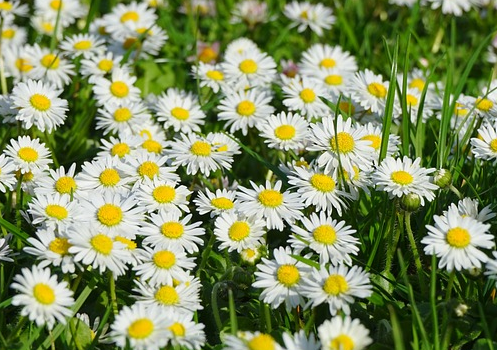[expert interpretation] morphological characteristics and control methods of chrysanthemum downy mildew
Chrysanthemum downy mildew occurs mostly in mountainous areas with average temperature of 16.4℃ ~ 19.0℃, annual rainfall of about 1500mm, low temperature and rainy spring, which is one of the main diseases of chrysanthemum. So what are the morphological characteristics and control methods of chrysanthemum downy mildew? Let's follow forestry experts to understand these questions.
I. What is chrysanthemum downy mildew?
Peronospora diideBary is one of the main diseases of chrysanthemum, belonging to Peronospora of Fungi phylum and Subphylum. Pathogen in low temperature and humid environment easy to disease, in spring disease, so that seedlings on the stems and leaves of white frost mold, growth weakened or seedlings wither death; autumn plant infected, leaf spots for light green, later spots gradually become purple-black, leaf back spots present a white frost mold layer, in high temperature easy to develop into yellow-brown spots, serious, spots convergence, plant death.
II. Morphological characteristics of downy mildew of chrysanthemum
Cyst peduncle is solitary or clustered, extending from stomata, without separation, trunk base is expanded, size is 225.0-412.0μm×7.8-11.8μm, main peduncle is 1/2~1/4 of total length, crown is 3-7 times bifurcated, tip is 2-3 times bifurcated, right angle or acute angle, top branch is 7.8-11.8μm long, thin end, base is slightly thick, top branch is obtuse, slightly expanded, or hypha is white, cyst peduncle is 3-5 times bifurcated, first bifurcate is asymmetric, The size is 286.0-707.0μm×9.0-16.0μm, the trunk length is 192.0-473.0μm, the terminal branches are nearly right angle, the length is 7.8-15.7μm, straight or curved, and the end is pointed. Sporangia pale brown, elliptical, 24.5-31.2μm×14.7-24.5μm in size; or sporangia without papilla, 23.0-33.0μ m × 17.0 -27.0μm in size.

Three, chrysanthemum downy mildew control methods
1. Agricultural measures: the selection of disease-resistant chrysanthemum varieties, such as calendula, wheat pole chrysanthemum, marigold and so on.
2. Seed treatment: seed dressing with 50% thiram WP before sowing.
3. Strengthen field management: Strengthen fertilizer and water management to prevent ponding and moisture retention.
4. chemical control
At the early stage of disease, spraying 600 times solution of 72% Kelu WP, spraying 800-1000 times solution of 60% Mieke WP and 500 times solution of 65% Manineb WP, spraying 800 times solution of 69% Anke·Mangzinc WP, spraying every 10 days, spraying 80% control effect.
This paper comes from Jilin Forestry Science and Technology Volume 38 Issue 6 Morphological Characteristics and Control Techniques of Downy Mildew of Chrysanthemum Xue Junhua, Deng Zhigang, Guan Shuwei, Zhou Shengli
Time: 2019-04-06 Click:
Related
- Fuxing push coffee new agricultural production and marketing class: lack of small-scale processing plants
- Jujube rice field leisure farm deep ploughing Yilan for five years to create a space for organic food and play
- Nongyu Farm-A trial of organic papaya for brave women with advanced technology
- Four points for attention in the prevention and control of diseases and insect pests of edible fungi
- How to add nutrient solution to Edible Fungi
- Is there any good way to control edible fungus mites?
- Open Inoculation Technology of Edible Fungi
- Is there any clever way to use fertilizer for edible fungus in winter?
- What agents are used to kill the pathogens of edible fungi in the mushroom shed?
- Rapid drying of Edible Fungi



